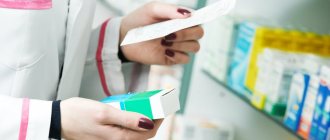Ceraxon (oral solution 100 mg/ml 10 ml No. 10)
A country
Spain
Country of manufacture may vary depending on the batch of goods. Please check with the operator for detailed information when confirming your order.
Active substance
Citicoline
Compound
Package 10 ml
Citicoline sodium 1045 mg.
Excipients: sorbitol - 2000 mg, glycerol - 500 mg, methyl parahydroxybenzoate - 14.5 mg, propyl parahydroxybenzoate - 2.5 mg, sodium citrate dihydrate - 60 mg, sodium saccharinate - 2 mg, strawberry flavor (strawberry essence 1487-S-Lucta) - 4.08 mg , potassium sorbate - 30 mg, citric acid solution 50% - up to pH 5.9-6.1, purified water - up to 10 ml. The solution for oral administration is a clear, colorless liquid with a characteristic strawberry odor.
pharmachologic effect
Nootropic drug. Citicoline, being a precursor of key ultrastructural components of the cell membrane (mainly phospholipids), has a wide spectrum of action: it promotes the restoration of damaged cell membranes, inhibits the action of phospholipases, preventing the excessive formation of free radicals, and also prevents cell death by affecting the mechanisms of apoptosis. In the acute period of stroke, citicoline reduces the volume of brain tissue damage and improves cholinergic transmission. In case of traumatic brain injury, it reduces the duration of post-traumatic coma and the severity of neurological symptoms; in addition, citicoline helps to reduce the duration of the recovery period. In chronic cerebral hypoxia, citicoline is effective in the treatment of cognitive disorders such as memory impairment, lack of initiative, and difficulties in performing daily activities and self-care. Increases the level of attention and consciousness, and also reduces the manifestation of amnesia. Ceraxon® is effective in the treatment of sensory and motor neurological disorders of degenerative and vascular etiology.
Indications for use
— acute period of ischemic stroke (as part of complex therapy); — recovery period of ischemic and hemorrhagic strokes; — traumatic brain injury, acute (as part of complex therapy) and recovery period; — cognitive and behavioral disorders in degenerative and vascular diseases of the brain.
Mode of application
The drug is taken with meals or between meals. Before use, the drug can be diluted in a small amount of water (120 ml or 1/2 cup). Acute period of ischemic stroke and traumatic brain injury: the recommended dose is 1000 mg (10 ml or 1 sachet) every 12 hours. Duration of treatment is at least 6 weeks. Recovery period of ischemic and hemorrhagic strokes, recovery period of traumatic brain injury, cognitive and behavioral disorders in degenerative and vascular diseases of the brain: the recommended dose is 500-2000 mg/day (5-10 ml 1-2 times/day or 1 sachet ( 1000 mg) 1-2 times/day). The dose and duration of treatment depend on the severity of the symptoms of the disease. Elderly patients do not require dose adjustment of Ceraxon®. Rules for using a dosing syringe 1. Place the dosing syringe in the bottle (the syringe plunger is completely lowered). 2. Carefully pull the plunger of the dosing syringe until the solution level is equal to the corresponding mark on the syringe. 3. Before taking, the required amount of solution can be diluted in 1/2 glass of water (120 ml). After each use, it is recommended to rinse the dosing syringe with water. Rules for using the drug in sachets 1. Holding the sachet vertically, carefully tear off its edge along the o. 2.The contents of the sachet can be drunk immediately after opening or before use can be diluted in 1/2 glass of water (120 ml).
Interaction
Citicoline enhances the effects of levodopa. Ceraxon® should not be prescribed concomitantly with medications containing meclofenoxate.
Side effect
Very rare (If any of the side effects indicated in the instructions get worse, or any other side effects not listed in the instructions are noticed, you should inform your doctor.
Contraindications
- pronounced vagotonia (predominance of the tone of the parasympathetic part of the autonomic nervous system);
- children and adolescents under 18 years of age (due to the lack of sufficient clinical data); - rare hereditary diseases associated with fructose intolerance; - hypersensitivity to the components of the drug. Use during pregnancy and lactation There is not enough clinical data on the use of citicoline during pregnancy. Although experimental studies on animals have not revealed any negative effects, during pregnancy the drug is prescribed only when the expected benefit of therapy for the mother outweighs the potential risk to the fetus. If it is necessary to use the drug during lactation, the issue of stopping breastfeeding should be decided, since there is no data on the excretion of citicoline in breast milk.
special instructions
In the solution for oral administration in the cold, a small amount of crystals may form due to temporary partial crystallization of the preservative. With further storage under recommended conditions, the crystals dissolve within several months. The presence of crystals does not affect the quality of the drug. Impact on the ability to drive vehicles and operate machinery During treatment, patients should be careful when performing potentially dangerous activities that require special attention and speed of psychomotor reactions (including driving a car and other vehicles, working with moving mechanisms, working as a dispatcher and operator).
Dispensing conditions in pharmacies
On prescription
Ceraxon tablets Citicoline 500 mg No. 20 - Instructions
Dosage form
Film-coated tablets, 20 pieces per package.
Compound
Active ingredient: citicoline;
1 tablet contains 522.5 mg of citicoline sodium, which is equivalent to 500 mg of citicoline.
Excipients: talc, magnesium stearate, colloidal silicon dioxide, croscarmellose sodium; hydrogenated castor oil, microcrystalline cellulose.
Shell: talc, magnesium stearate, titanium dioxide (E 171), polyethylene glycol 6000; methacrylate copolymer (type A).
Pharmacological group
Psychostimulants, drugs used for attention deficit hyperactivity disorder (ADHD), nootropic drugs.
Pharmacological properties
Pharmacodynamics.
Citicoline stimulates the biosynthesis of structural phospholipids in neuronal membranes, which is confirmed by magnetic resonance spectroscopy data. Thanks to this mechanism of action, citicoline exhibits the functioning of such membrane mechanisms as the operation of ion exchange pumps and receptors, the modulation of which is necessary for the normal conduction of nerve impulses. Due to its stabilizing effect on the neuronal membrane, citicoline exhibits decongestant properties that promote the reabsorption of cerebral edema.
Experimental studies have shown that citicoline inhibits the activation of certain phospholipases (A1, A2, C and D), reducing the formation of free radicals, preventing the destruction of membrane systems and preserving antioxidant defense systems such as glutathione.
Citicoline preserves the energy reserve of neurons, inhibits apoptosis and stimulates the synthesis of acetylcholine.
It has been experimentally proven that citicoline also exhibits a preventive neuroprotective effect in focal cerebral ischemia.
Clinical studies have shown that citicoline significantly increases rates of functional recovery in patients with acute ischemic cerebrovascular accident and coincides with a slowdown in the growth of ischemic brain damage according to neuroimaging.
In patients with traumatic brain injury, citicoline accelerates recovery and reduces the duration and intensity of post-traumatic syndrome.
Citicoline improves the level of attention and consciousness, cognitive and neurological disorders associated with cerebral ischemia, and helps reduce the manifestations of amnesia.
Pharmacokinetics.
Citicoline is well absorbed when administered orally. After administration of the drug, a significant increase in the level of choline in the blood plasma is observed. When administered orally, the drug is almost completely absorbed. Studies have shown that bioavailability through oral and intravenous routes of administration is almost the same.
The drug is metabolized in the intestines and liver with the formation of choline and cytidine.
After administration, citicoline is widely distributed in brain structures with the rapid incorporation of the choline fraction into structural phospholipids and the cytidine fraction into cytidine nucleotides and nucleic acids. In the brain, citicoline is incorporated into cellular, cytoplasmic and mitochondrial membranes, taking part in the construction of the phospholipid fraction.
Only a small amount of the dose is found in urine and feces (less than 3%). Approximately 12% is excreted through CO 2 of exhaled air. During the excretion of the drug in the urine, two phases are distinguished: the first phase - within 36 hours, in which the rate of excretion decreases quickly, and the second phase - in which the rate of elimination decreases much more slowly. The same phasicity is observed during excretion through the respiratory tract. The rate of CO 2 removal decreases quickly for about 15 hours, then decreases much more slowly.
Indications for use
- Stroke, acute phase of cerebrovascular accidents and their neurological consequences.
- Traumatic brain injury and its neurological consequences.
- Cognitive and behavioral disorders due to chronic vascular and degenerative brain disorders.
Contraindications
- Hypersensitivity to citicoline or other components of the drug.
- Patients with high tone of the parasympathetic nervous system.
Interaction with other drugs and other types of interactions
Citicoline enhances the effect of levodopa. Should not be administered concomitantly with medicinal products containing meclofenoxate.
Use during pregnancy and lactation
There are no sufficient data on the use of citicoline in pregnant women. Citicoline should not be used during pregnancy unless absolutely necessary. During pregnancy, the drug is prescribed only when the expected therapeutic benefit outweighs the potential risk. Data on the penetration of citicoline into breast milk and its effect on the fetus are unknown.
The ability to influence the reaction rate when driving vehicles or other mechanisms
In individual cases, some adverse reactions from the central nervous system may affect the ability to drive vehicles or operate machinery.
Directions for use and doses
The recommended dose is from 500 to 2000 mg per day (1-4 tablets), depending on the severity of symptoms and the patient's condition.
The dosage of the drug and the duration of treatment are determined by the doctor.
Elderly patients do not require dose adjustment.
Children
Experience with the drug in children is limited, so the drug is prescribed only when the expected benefit outweighs any potential risk.
Overdose
No cases of overdose have been reported.
Adverse reactions
Adverse reactions occur very rarely (<1/10000), including isolated cases.
From the psyche: hallucinations.
From the nervous system: severe headache, dizziness.
From the cardiovascular system: arterial hypertension, arterial hypotension, tachycardia.
From the respiratory system: shortness of breath.
From the digestive tract: nausea, vomiting, occasional diarrhea.
Allergic reactions: rash, itching, angioedema, anaphylactic shock, redness, urticaria, exanthema, purpura.
General disorders: chills, swelling.
Best before date
3 years.
Storage conditions
Store at a temperature not exceeding 30 ° C. Keep out of the reach of children!
Vacation category
On prescription.
Ceraxon injection solution 1000 mg 4 ml amp 5 pcs
Pharmacological group:
Nootropic drug.
Pharmacodynamics:
Citicoline, being a precursor of key ultrastructural components of the cell membrane (mainly phospholipids), has a wide spectrum of action - it promotes the restoration of damaged cell membranes, inhibits the action of phospholipases, prevents the excessive formation of free radicals, and also prevents cell death by affecting the mechanisms of apoptosis. In the acute period of stroke, citicoline reduces the volume of brain tissue damage and improves cholinergic transmission. In case of traumatic brain injury, it reduces the duration of post-traumatic coma and the severity of neurological symptoms, in addition, it helps to reduce the duration of the recovery period. In chronic cerebral hypoxia, citicoline is effective in the treatment of cognitive disorders such as memory impairment, lack of initiative, and difficulties in performing daily activities and self-care. Increases the level of attention and consciousness, and also reduces the manifestation of amnesia. Citicoline is effective in the treatment of sensory and motor neurological disorders of degenerative and vascular etiology.
Pharmacokinetics:
Suction
Citicoline is well absorbed when administered intravenously and intramuscularly.
Metabolism
When administered intravenously and intramuscularly, citicoline is metabolized in the liver to form choline and cytidine. After administration, the concentration of choline in the blood plasma increases significantly
Distribution
Citicoline is widely distributed in brain structures, with rapid incorporation of choline fractions into structural phospholipids and cytidine fractions into cytidine nucleotides and nucleic acids. Citicoline penetrates the brain and is actively incorporated into cellular, cytoplasmic and mitochondrial membranes, forming part of the fraction of structural phospholipids.
Removal
Only 15% of the administered dose of citicoline is excreted from the human body: less than 3% by the kidneys and about 12% by exhaled CO2. The excretion of citicoline in urine can be divided into 2 phases: a first phase, lasting about 36 hours, during which the rate of excretion decreases rapidly, and a second phase, during which the rate of excretion decreases much more slowly. The same thing is observed in exhaled CO2 - the rate of elimination decreases rapidly after about 15 hours, and then decreases much more slowly.


